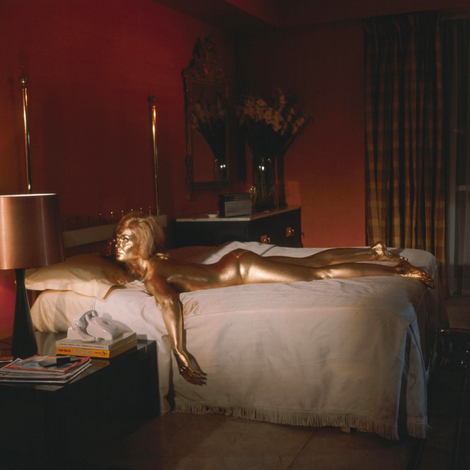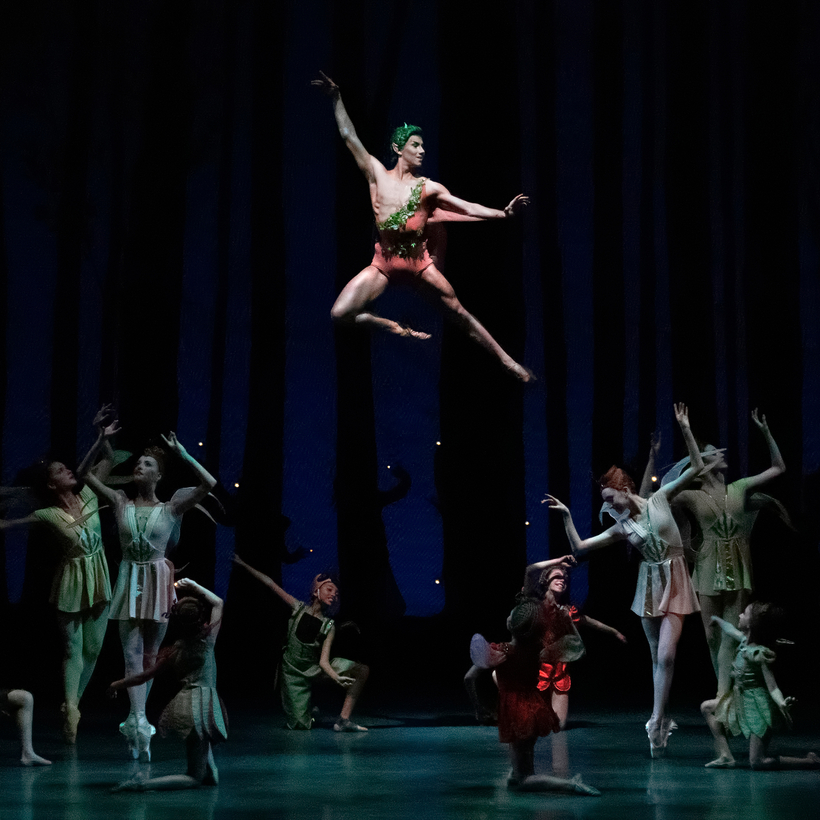Peerless in the realm of abstract ballet, George Balanchine was also a masterful storyteller. His version of The Nutcracker is widely familiar, a holiday tradition that’s inspired Nutcracker productions around the world. His finest narrative creation, however, is the two-act ballet he drew from Shakespeare’s A Midsummer Night’s Dream.
Balanchine knew the play intimately and could quote it at length. His Midsummer Night’s Dream—which returns to New York City Ballet repertory for one week this spring, beginning on May 27—honors the high and low humor of its befuddled lovers and decadent fairies. It also embodies profound undercurrents in the text.
Balanchine choreographed the ballet in 1962, when his young company was still defining itself. The plum roles are those of the fairy monarchs, Titania and Oberon, who represent the allure and virtuosity expected of a ballerina and danseur noble. Yet it is in the contrasts between the immortal fairies and the mortal paramours that Balanchine reveals the anchoring pathos of the story.

Because they are eternal and magical, the fairies never have much to lose in love or war. Their frictions play out like games that pass the time. For the mortals, these imbalances in the fairy realm cause genuine discord: despair, grief, loss, longing, jealousy, suspicion, and even violence. Still, it is the lovers who ultimately bond and the fairy monarchs who part. To have everything is to have nothing, the ballet suggests, while longing for completion gives the lovers purpose. How does Balanchine show all this wordlessly?
In the fleet opening scene, the fairy monarchs enter from opposite sides—Titania, stage left; Oberon, right—and here the pivotal conflict over Titania’s young page is spelled out in action and mime. Oberon crosses to Titania’s side and carries the child to his fold. Titania, standing her ground, gestures, and the child returns. Oberon sends his retinue to retrieve him; Titania’s retinue rebuffs them. Oberon wags a threatening finger at his co-equal. Not only is there clarity and concision to this exposition, but the fairies then repeat the mimed dialogue in near double time. The sped-up repetition exposes two things: that this is simply the current iteration of the sort of thing they do regularly and that these are the terms for this new round of play.

Another piece of staging further underpins the idea that the fairies are not invested in the conflict but in the roles they are playing. Throughout the entire ballet, Titania, on defense, never once enters or exits from Oberon’s side of the stage, while Oberon, on offense, regularly crosses over. If the fairies actually took their custody battle seriously, would Titania have so limited herself, or surrendered the child so breezily in the end?
For the lovers, the equating of everything and nothing plays out very differently. At the height of the story’s delicious confusion, Helena has suddenly become the beloved of both suitors, and Hermia, who had been the adored maiden, is shunned. On an undulating swell of music, Helena is lifted repeatedly in arabesque by Lysander, Hermia’s erstwhile swain. At the same time, Hermia sinks to the floor sobbing into her hands, her body heaving on the very same swelling melody.
Helena soars. Hermia sinks. Neither woman is happy. Hermia has lost everything, but Helena, in receiving it, gains nothing because she rightly mistrusts the sudden, drunken mania professed for her. Experiencing a mortal version of the fairies’ dilemma, she possesses all but what really matters: a sober declaration of love from the one man she desires. When Helena is placed down from the soaring lifts, it is she who sobs into cupped hands.
For mortals there is pain in love denied, but there is the compensating illusion of eternity in love attained.
A Midsummer Night’s Dream will be on at New York City Ballet from May 27 to June 1
Matthew Brookoff is a New York–based choreographer and dance writer


